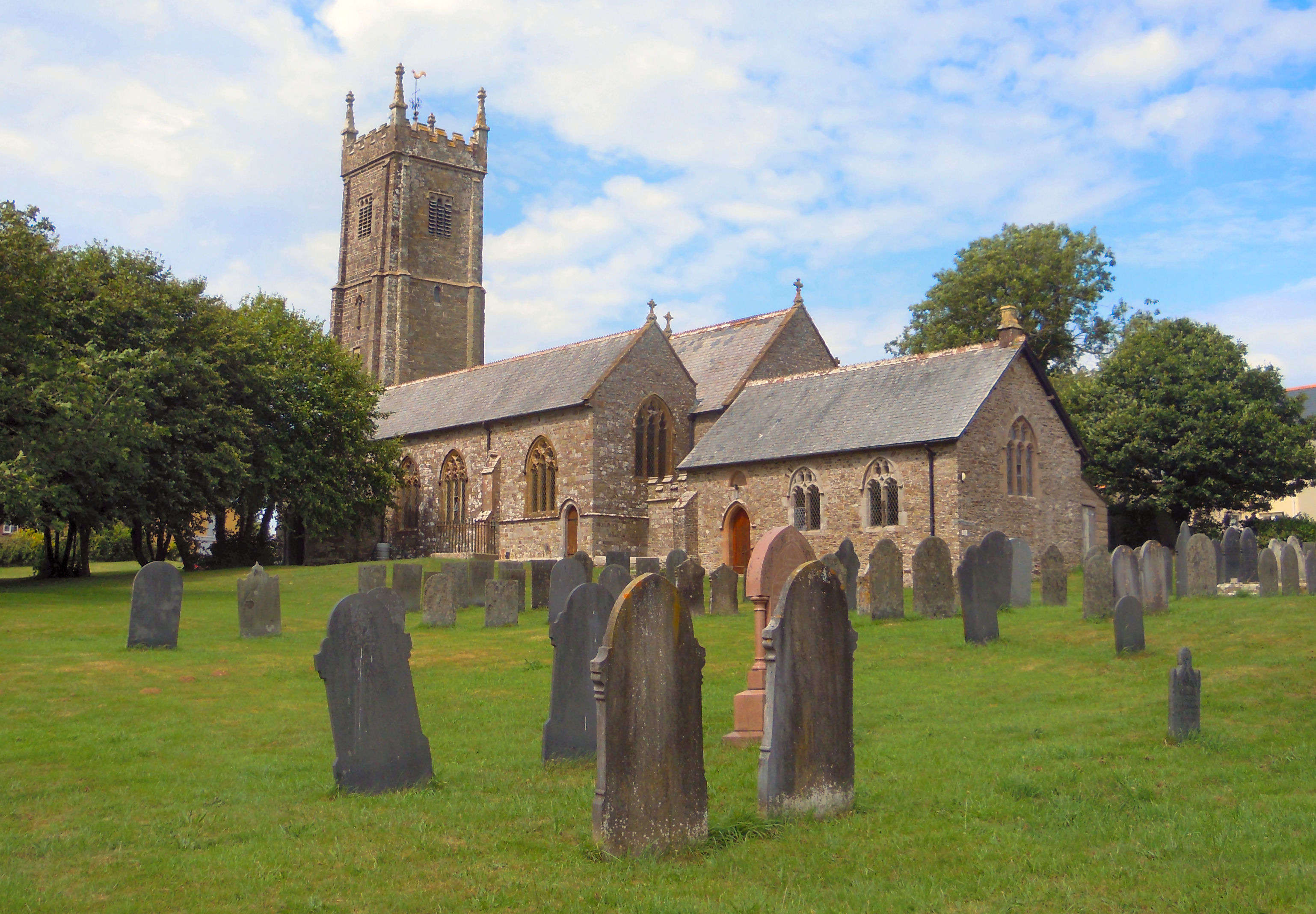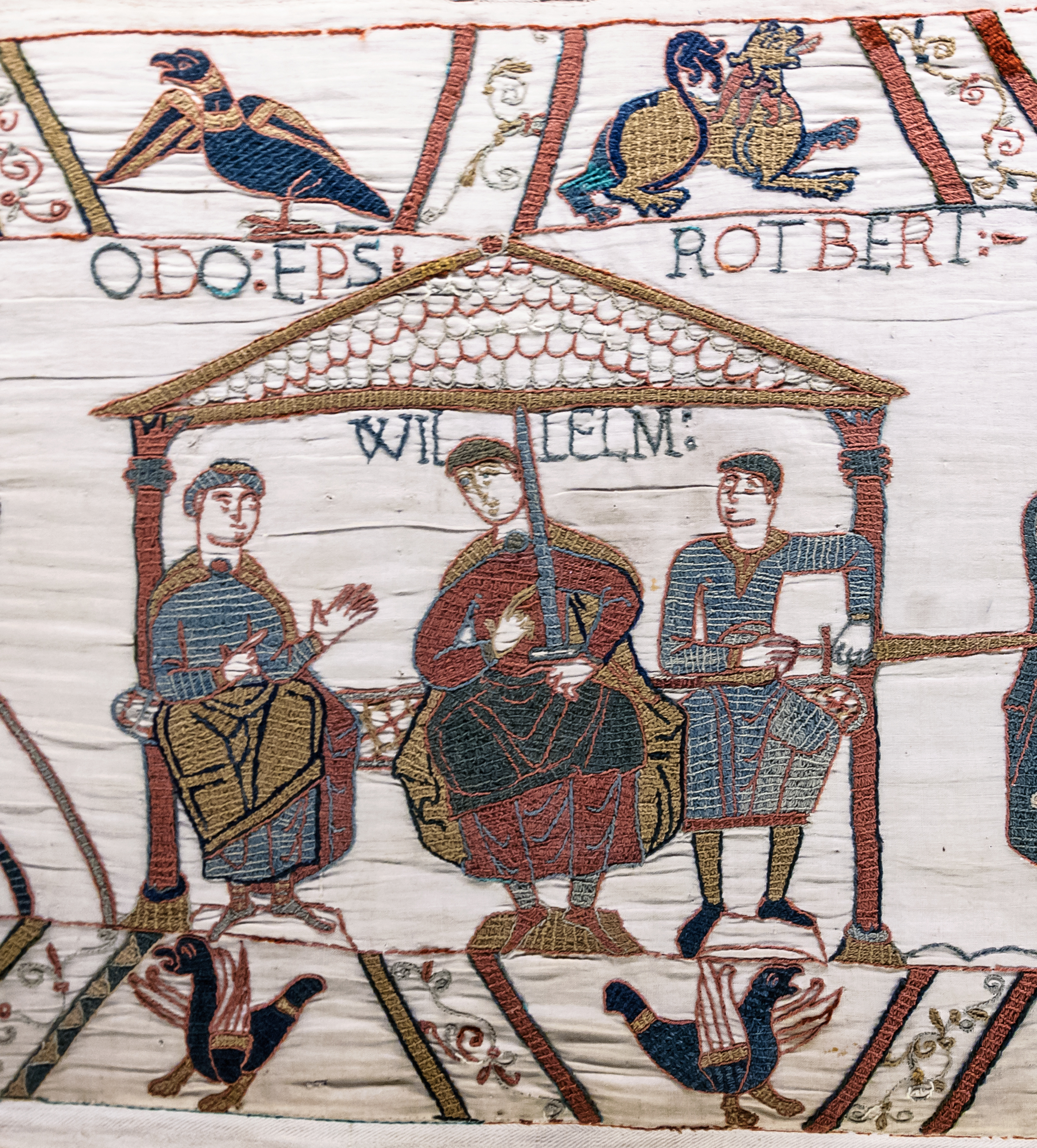|
Stafford Barton
Stafford (anciently Stowford) is an historic manor in the parish of Dolton in Devon, England. The present manor house known as Stafford Barton is a grade II* listed building. A house of some form has existed on the manor probably since the Norman Conquest in the 11th century. Surviving walls can be dated to the 16th century.Haigh, Lesley (2009)Stafford Barton, Dolton, Devon: A House with History. Many additions and renovations have taken place in the intervening years, and in the early 20th century Charles Luxmoore made many alterations and extensions and imported several major architectural features from ancient local mansions undergoing demolition so that "it has become somewhat difficult to discern its original form". In the nineteenth century the estate was very substantial, with 400 acres of associated farmland and a large staff, and by 1956, at the end of the Luxmoore tenure, it had grown to 1,460 acres with 7 farms, several cottages and smallholdings.Advertisement by Con ... [...More Info...] [...Related Items...] OR: [Wikipedia] [Google] [Baidu] |
Feudal Barony Of Gloucester
The feudal barony of Gloucester or Honour of Gloucester was one of the largest of the mediaeval English feudal baronies in 1166, comprising 279 knight's fees, or manors. The constituent landholdings were spread over many counties. The location of the ''caput'' at Gloucester is not certain as Gloucester Castle appears to have been a royal castle, but it is known that the baronial court was held at Bristol in Gloucestershire. Descent Pre-Norman Conquest Brictric son of Algar Although English feudal baronies are generally stated to have been brought into existence by the early Norman kings of England following the Norman Conquest of 1066 and the subsequent feudal land tenure ''per baroniam'', in the instance of the barony of Gloucester it is well recorded that many of the lands of the Norman barony had been held before 1066 by the great Saxon thegn Brictric son of Algar. According to the account by the ''Continuator of Wace'' and others, in his youth Brictric declined the roman ... [...More Info...] [...Related Items...] OR: [Wikipedia] [Google] [Baidu] |
Stafford Northcote, 1st Earl Of Iddesleigh
Stafford Henry Northcote, 1st Earl of Iddesleigh (27 October 1818 – 12 January 1887), known as Sir Stafford Northcote, Bt from 1851 to 1885, was a British Conservative politician. He served as Chancellor of the Exchequer between 1874 and 1880 and as Foreign Secretary between 1885 and 1886 According to Nigel Keohane, historians have portrayed him "as a man who fell short of the ultimate achievement of being prime minister largely because of personal weakness, and lack of political virility and drive." Background and education Northcote (pronounced "Northcut") was born at Portland Place, London, on 27 October 1818. He was the eldest son of Henry Stafford Northcote (1792–1850), eldest son of Sir Stafford Henry Northcote, 7th Baronet. His mother was Agnes Mary (died 1840), daughter of Thomas Cockburn. His paternal ancestors had long been settled in Devon, tracing their descent from Galfridas de Nordcote who settled there in 1103. The family home was situated at Pynes House ... [...More Info...] [...Related Items...] OR: [Wikipedia] [Google] [Baidu] |
Northcote Baronets
There have been two baronetcies created for members of the Northcote family, one in the Baronetage of England and one in the Baronetage of the United Kingdom. One creation is extinct. The Northcote Baronetcy, of Hayne in the County of Devon, was created in the Baronetage of England on 16 July 1641. For more information on this creation, see the Earl of Iddesleigh. The Northcote Baronetcy, of Seamore Place in the Parish of St George, Hanover Square, in the County of Middlesex, was created in the Baronetage of the United Kingdom on 23 November 1887. For more information on this creation, see the Baron Northcote. Northcote baronets, of Hayne (1641) *see the Earl of Iddesleigh Earl of Iddesleigh ( ), in the County of Devon, is a title in the Peerage of the United Kingdom. It was created in 1885 for the Conservative politician Sir Stafford Northcote, 8th Baronet, of Pynes in the parish of Upton Pyne near Exeter in ... Northcote baronets, of Seamore Place (1887) *see the ... [...More Info...] [...Related Items...] OR: [Wikipedia] [Google] [Baidu] |
Pynes House
Pynes House is a Grade II* listed Queen Anne style country house built by Hugh Stafford between around 1700 and 1725, situated in the parish of Upton Pyne, Devon, 3 miles northwest of Exeter. It was the manor house for the Manor of Upton Pyne, which included the village of Upton Pyne. Description The house has four storeys and covers . Its present owners run the house as a wedding and events venue, offering 12 bedrooms. It is set in gardens and grounds of 37 acres. The building is primarily made of bricks to a square plan, with Portland stone dressings. The principal roof is slate, with four large brick chimney stacks. History The manor of Upton Pynes was held by the Pyne family for ten generations from the time of King Henry I, following which it passed through the Larder (which held it for another five generations), Copleston and Stafford families and finally the Northcote family in 1732. This 1732 transfer occurred when it passed to the Northcote family on the marriage of th ... [...More Info...] [...Related Items...] OR: [Wikipedia] [Google] [Baidu] |
Manor Of Upton Pyne
Pynes House is a Grade II* listed Queen Anne style country house built by Hugh Stafford between around 1700 and 1725, situated in the parish of Upton Pyne, Devon, 3 miles northwest of Exeter. It was the manor house for the Manor of Upton Pyne, which included the village of Upton Pyne. Description The house has four storeys and covers . Its present owners run the house as a wedding and events venue, offering 12 bedrooms. It is set in gardens and grounds of 37 acres. The building is primarily made of bricks to a square plan, with Portland stone dressings. The principal roof is slate, with four large brick chimney stacks. History The manor of Upton Pynes was held by the Pyne family for ten generations from the time of King Henry I, following which it passed through the Larder (which held it for another five generations), Copleston and Stafford families and finally the Northcote family in 1732. This 1732 transfer occurred when it passed to the Northcote family on the marriage o ... [...More Info...] [...Related Items...] OR: [Wikipedia] [Google] [Baidu] |
Dowland, Devon
Dowland is a civil parish in Devon, situated near Winkleigh Winkleigh is a civil parish and small village in Devon, England. It is part of the local government area of Torridge District Council. The population of the parish at the 2011 census was 1,305, compared to 1,079 in 1901. The population of the e .... It is also the name of a hamlet in the parish. References Hamlets in Devon Civil parishes in Devon Torridge District {{devon-geo-stub ... [...More Info...] [...Related Items...] OR: [Wikipedia] [Google] [Baidu] |
Tristram Risdon
Tristram Risdon (c. 1580 – 1640) was an English antiquarian and topographer, and the author of ''Survey of the County of Devon''. He was able to devote most of his life to writing this work. After he completed it in about 1632 it circulated around interested people in several manuscript copies for almost 80 years before it was first published by Edmund Curll in a very inferior form. A full version was not published until 1811. Risdon also collected information about genealogy and heraldry in a note-book; this was edited and published in 1897. Biography Risdon was born at Winscott, in the parish of St Giles in the Wood, near Great Torrington in Devon, England. He was the eldest son of William Risdon (d.1622) and his wife Joan (née Pollard).Mary Wolffe''Risdon, Tristram (c. 1580–1640)'' Oxford Dictionary of National Biography, Oxford University Press, 2004. Accessed 7 February 2011. (Subscription required) William was the younger son of Giles Risdon (1494–1583) of Bable ... [...More Info...] [...Related Items...] OR: [Wikipedia] [Google] [Baidu] |
Canting Arms
Canting arms are heraldic bearings that represent the bearer's name (or, less often, some attribute or function) in a visual pun or rebus. French heralds used the term (), as they would sound out the name of the armiger. Many armorial allusions require research for elucidation because of changes in language and dialect that have occurred over the past millennium. Canting arms – some in the form of rebuses – are quite common in German civic heraldry. They have also been increasingly used in the 20th century among the British royal family. When the visual representation is expressed through a rebus, this is sometimes called a ''rebus coat of arms''. An in-joke among the Society for Creative Anachronism heralds is the pun, "Heralds don't pun; they cant." Examples of canting arms Personal coats of arms A famous example of canting arms are those of Queen Elizabeth The Queen Mother's paternal family, the Bowes-Lyon family. The arms (pictured below) contain the bo ... [...More Info...] [...Related Items...] OR: [Wikipedia] [Google] [Baidu] |
Buckland Brewer
Buckland Brewer is a village and civil parish in the Torridge district of Devon, England, 4.7 miles south of Bideford. Historically the parish formed part of Shebbear Hundred. According to the 2001 census it had a population of 777, increasing to 794 at the 2011 census The village is part of Waldon electoral ward. The population for this at the same census was 1,679. __TOC__ Population Historical population figures show a variable trend of increased and decreased population. Torridge District Council historical data shows the following populations: * 1801: 872 * 1901: 644 * 2001: 777 Religion The parish church of St Mary and St Benedict (Church of England) is part of the benefice of the Hartland Coast Team Ministry. This falls within Hartland Deanery, in the Archdeaconry of Barnstaple. This is in the Diocese of Exeter. The church tower is over 500 years old, with a Norman stoup and doorway. There are monuments to, among others, John William Taylor of John Taylor & Co ... [...More Info...] [...Related Items...] OR: [Wikipedia] [Google] [Baidu] |
Robert, Count Of Mortain
Robert, Count of Mortain, 2nd Earl of Cornwall (–) was a Norman nobleman and the half-brother (on their mother's side) of King William the Conqueror. He was one of the very few proven companions of William the Conqueror at the Battle of Hastings and as recorded in the Domesday Book of 1086 was one of the greatest landholders in his half-brother's new Kingdom of England. Life Robert was the son of Herluin de Conteville and Herleva of Falaise and brother of Odo of Bayeux.Detlev Schwennicke, ''Europäische Stammtafeln: Stammtafeln zur Geschichte der Europäischen Staaten'', Neue Folge, Band III Teilband 4 (Marburg, Germany: Verlag von J. A. Stargardt, 1989), Tafel 694B Robert was born in Normandy, a half-brother of William the Conqueror. and was probably not more than a year or so younger than his brother Odo, born . About 1035, Herluin, as Vicomte of Conteville, along with his wife Herleva and Robert, founded Grestain Abbey. Count of Mortain Around 1049 his brother Duke ... [...More Info...] [...Related Items...] OR: [Wikipedia] [Google] [Baidu] |
.jpg)


